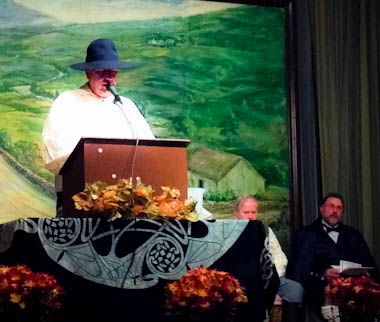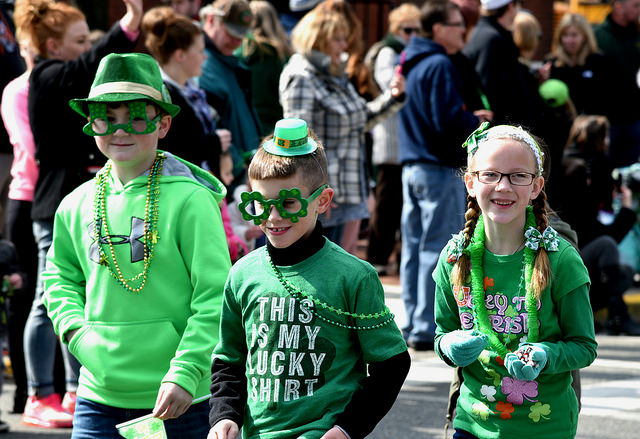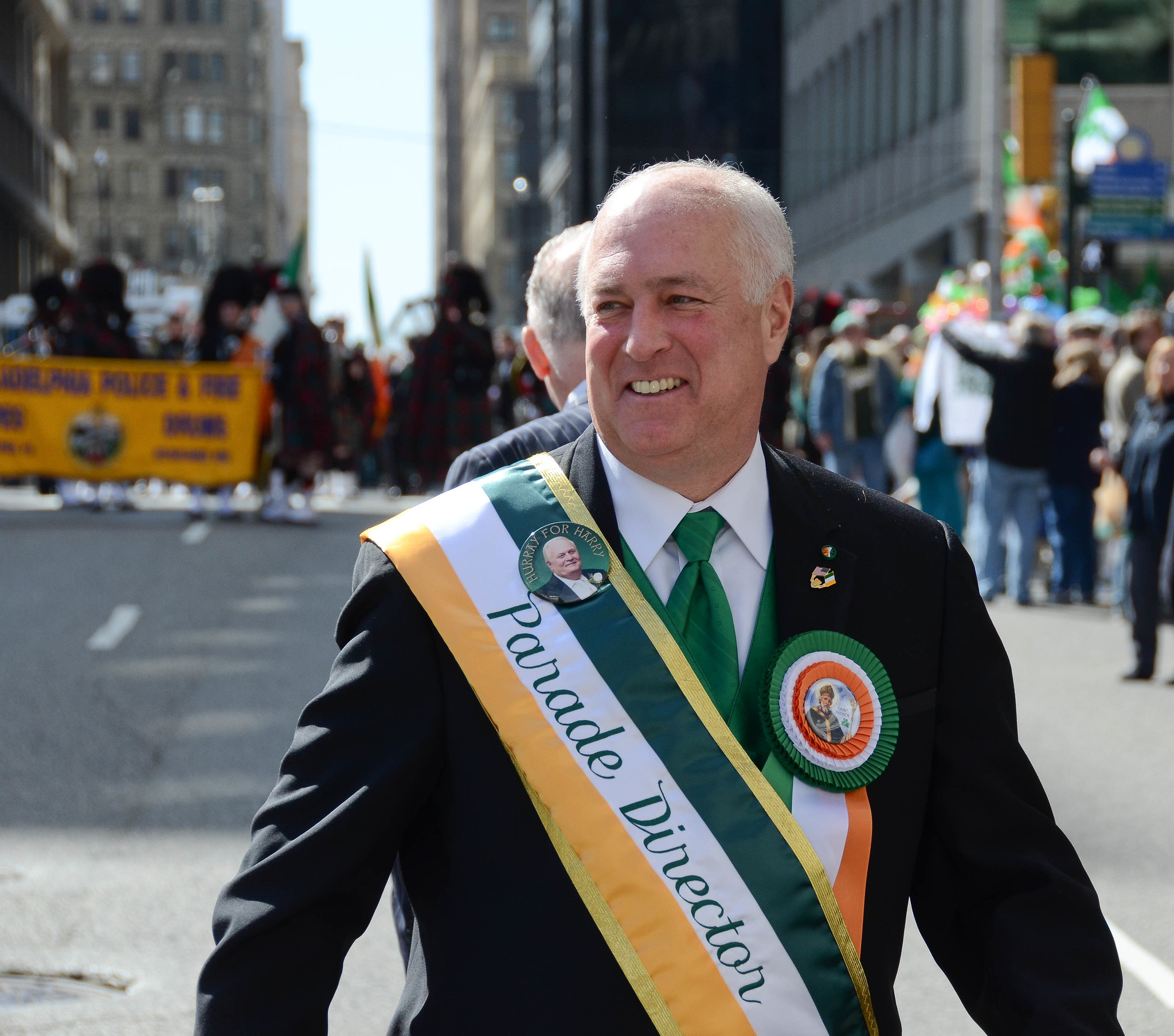
Dr. Bill Watson acts out a part in the Duffy’s Cut drama. Behind him, from left, Gerry Sweeney and the Rev. Dr. Frank Watson.
Some were murdered, bludgeoned to death or shot at point-blank range as they tried to escape. Others were buried alive, the disease they contracted—likely from stream water—causing their skin to go cold, their eyes fixed and glassy, like death, but not death. The nuns who came to tend to them were sent away, told they were not needed in this camp of suffering in a hidden corner of Chester County, where the dead and dying were thousands of miles from family and friends.
The written story of the 57 Irish immigrants who came to build a land bridge for the railroad—including one woman, the unwed mother of one who cooked and did their laundry—and died under mysterious circumstances is horrifying enough. But when it’s acted out, as it was on Sunday, October 28, at Philadelphia’s Irish Center, it is bone-chilling. Some people wept as the ghost stories were told by actors and participants in the archeological project that literally unearthed both the story and the victims of this 1832 crime, when disease and ethnic and religious prejudice intersected tragically. See a video clip of the presentation by Lori Lander Murphy.
The two men who lead the Duffy’s Cut project—Dr William Watson of Immaculata University and his twin brother, Lutheran minister, Dr. Frank Watson—both took roles in the theatrical presentation which they co-wrote with Marita Krivda Poxon, a retired librarian who grew up in the Oak Lane section of the city and who has written two history books about the region. One, called Irish Philadelphia, will be released in January.
To turn this drama into theater, the writers drew on both written accounts, some speculation, and the stories of ghostly sightings in the area that were passed down through generations. Jerry Sweeney of Philadelphia played Patrick Doyle, one of those 19th century witnesses who claimed to have seen the dead workers, “saw with my own eyes, the ghosts of the Irishmen, hopping and a bobbing on their graves.”
Those stories passed into the 20th century. In the audience was Kathy Wagner, who lives not far from the mass burial site in Malvern. She said when her sons were young, “I used to tell them to go look for the railroad workers. We knew about them. And they were there all along.”
Project leader Bill Watson had his own ghostly encounters. “Bill saw a trio of ghosts and in the play, Patrick Doyle, sees three ghosts,” said Poxon, after the show.
Poxon, who studied literature at Trinity College in Dublin and had wanted to be a writer, didn’t start writing seriously until she retired. “And I love to write ghost stories,” she said, laughing, the white wimple on her head—she played Sister Pelagia, one of the Sisters of Charity who came to minister to the sick—bobbing like a seagull.
The work at the Malvern site was temporarily halted after seven bodies were recovered—bodies suspected to be the laundress and six workers who had tried to escape and were killed. Most of them were buried this year in a donated plot at West Laurel Hill Cemetery in Bala Cynwd. One, believed to be a teenaged Donegal man named John Ruddy, is being held until DNA evidence confirms his identity. The Ruddy family still lives in Inishowen Peninsula, at the top of Donegal, where John was from; one family member came to the US to donate DNA for analysis by experts at the Smithsonian Institute. The Ruddy family has a genetic dental anomaly that was also found in the recovered skull; the family also report that there’s a family story of a young Ruddy who went to America who was never heard from again.
Work at the site won’t continue until Amtrak, which runs trains along the line, issues permits. The rest of the bodies are buried deeper and all work stopped because the mass grave is in close proximity to the train line.
Amtrak is expected to issue those permits, “but the weather has to behave,” said Dr. Frank Watson, who played 19th century journalist Julius Friedrich Sachse, who wrote about the Duffy’s Cut ghost sightings, and provided bagpipe interludes.
The bodies are buried about 30 feet down “at the original grade of the valley,” said Bill Watson, who wrote his own part—that of a young Donegal worker. “We’re going to need an earth mover in there before our team gets started.”
He said that the forensic scientists who helped the Watsons diagnose murder as the cause of death of some of the seven expect that the other 30 likely died of cholera, but that won’t be known for sure until the bones are brought up and examined. “We think that some of those people may have been buried alive because the cholera trance made them appear dead. Cholera has been known to turn people into living corpses.”
In March, PBS will present its second program on Duffy’s Cut in its true-life crime series, Secrets of the Dead.
And maybe, by then John Ruddy will be in his final resting place in Donegal. If it turns out that the bones don’t belong to Ruddy, he’ll still rest in peace in the land where he was born. Irish Center President Vincent Gallagher has donated a gravesite in his family plot in Ardara, County Donegal. “He’ll be right next to my grandparents,” said Gallagher.


